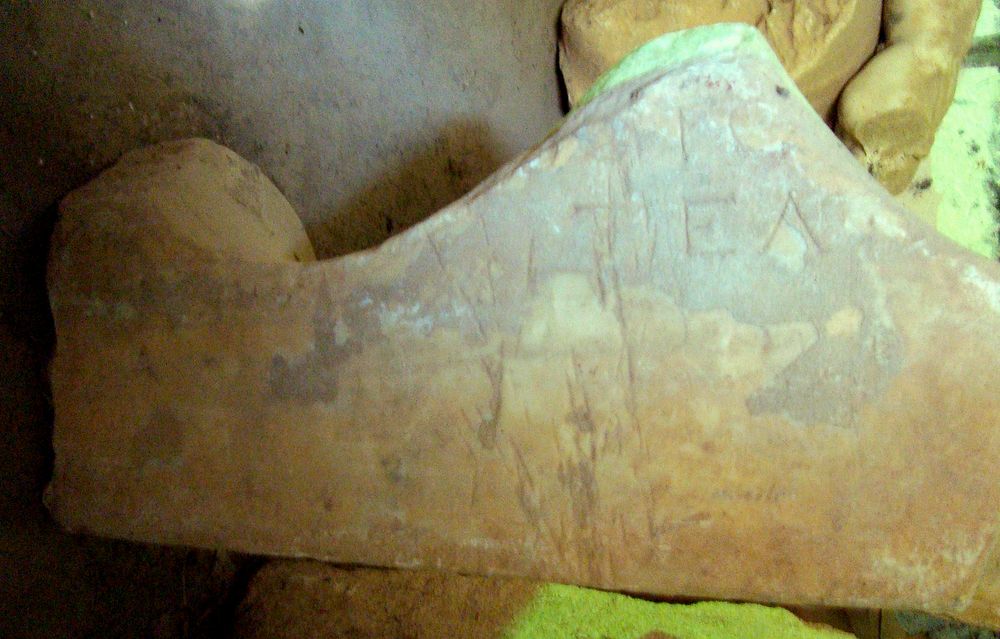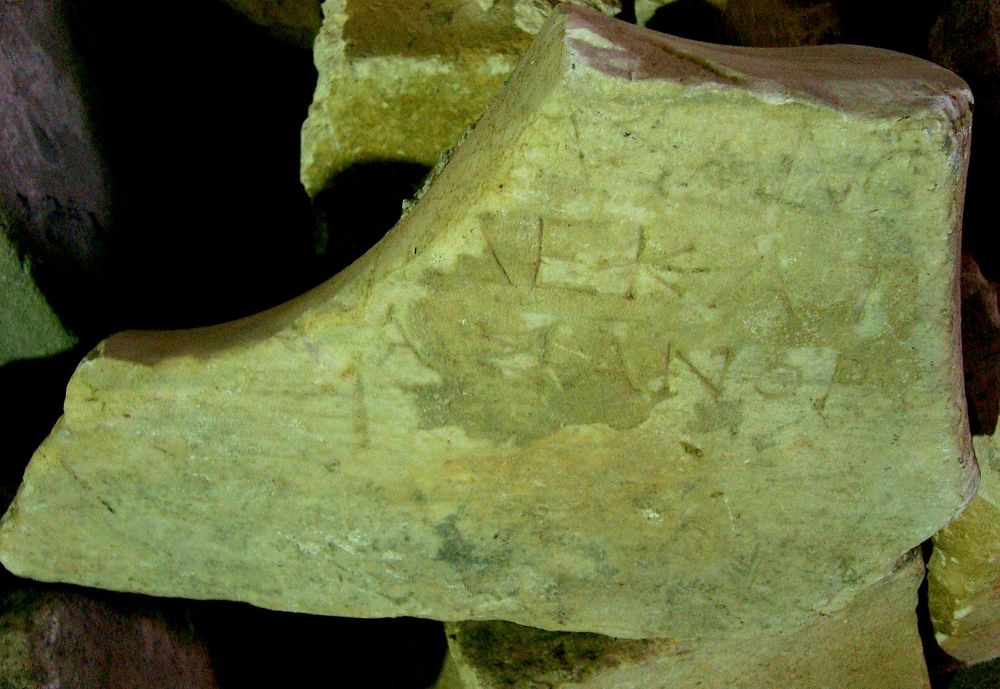EpiDoc XML:
IGCyr1319002
Trismegistos ID:
738866
Source description
Support: Two non adjacent parts of a rectangular white marble block, reddish from earth and in part covered with concrete; later re-cut so as to form a crest on top of the inscribed face and also rounded hollows at rear (fragment a is broken off on top of the right 'peak' w: 0.54 × h: 0.22 × d: 0.28; fragment b is chipped off on top of the 'peak' and the right edge is also cut off on a slightly curved line w: 0.34 × h: 0.25 × d: 0.19).
Layout: Inscribed on the face in three lines, ending at 0.14 from the lower edge.
Letters: L. 1 0.025, l. 2-3 0.02, without serifs; epsilon with rather long central bar, smaller omicron, slanting sigma.
Date: End of fourth or beginning of third century BC (lettering).
Findspot: Found before 1997 at Cyrene ➚: exact findspot unrecorded and surely related to the re-use.
Last recorded location: Cyrene Museum, inventory number missing. Seen by C. Dobias-Lalou in 1997 and again 2010 in Shahat: Cyrene Museum.
Text constituted from: Transcription from stones (CDL).
Bibliography
Not published before IGCyr 131900 ➚.
Text
French translation
[Untel] fils de Damasanôr (scil. a consacré à Apollon) au titre de la dîme (scil. la statue de) Télôn fils de Damasanôr.
English translation
[So-and-so] son of Damasanor (scil. dedicated to Apollo) as a tithe (scil. the statue of) Telon son of Damasanor.
Italian translation
[Il tale] figlio di Damasanor (scil. ha dedicato ad Apollo) come decima (scil. la statua di) Telon figlio di Damasanor.
Commentary
In most occurrences of such dedications of a statue, the name of the honoured person is mentioned first at the accusative and the name of the dedicant comes at the end at the nominative. However, the contrary is possible and seems to be preferable here on behalf of the space necessary at line 2 for the name of Apollo.
The word υἱός is normally subaudible after the genitive of the father's name. Another possibility would be to cut the father's name Δαμασάνο|ρος at the end of line 1 and have its last syllable at line 2. Yet this would make line 1 shorter that the following lines and such a cut is quite unusual. So we choose to add the word for 'son', stressing the family relation between the anonymous dedicant and his honored brother.
What sort of monument the recut stones were intended for is puzzling. Perhaps the framing of a latrines bench?
CC BY-NC-SA 4.0 Deed Attribution-NonCommercial-ShareAlike 4.0 International License.
All citation, reuse or distribution of this work must contain a link back to DOI: https://doi.org/10.60760/unibo/igcyrgvcyr2 and the filename (IGCyr000000 or GVCyr000), as well as the year of consultation.



